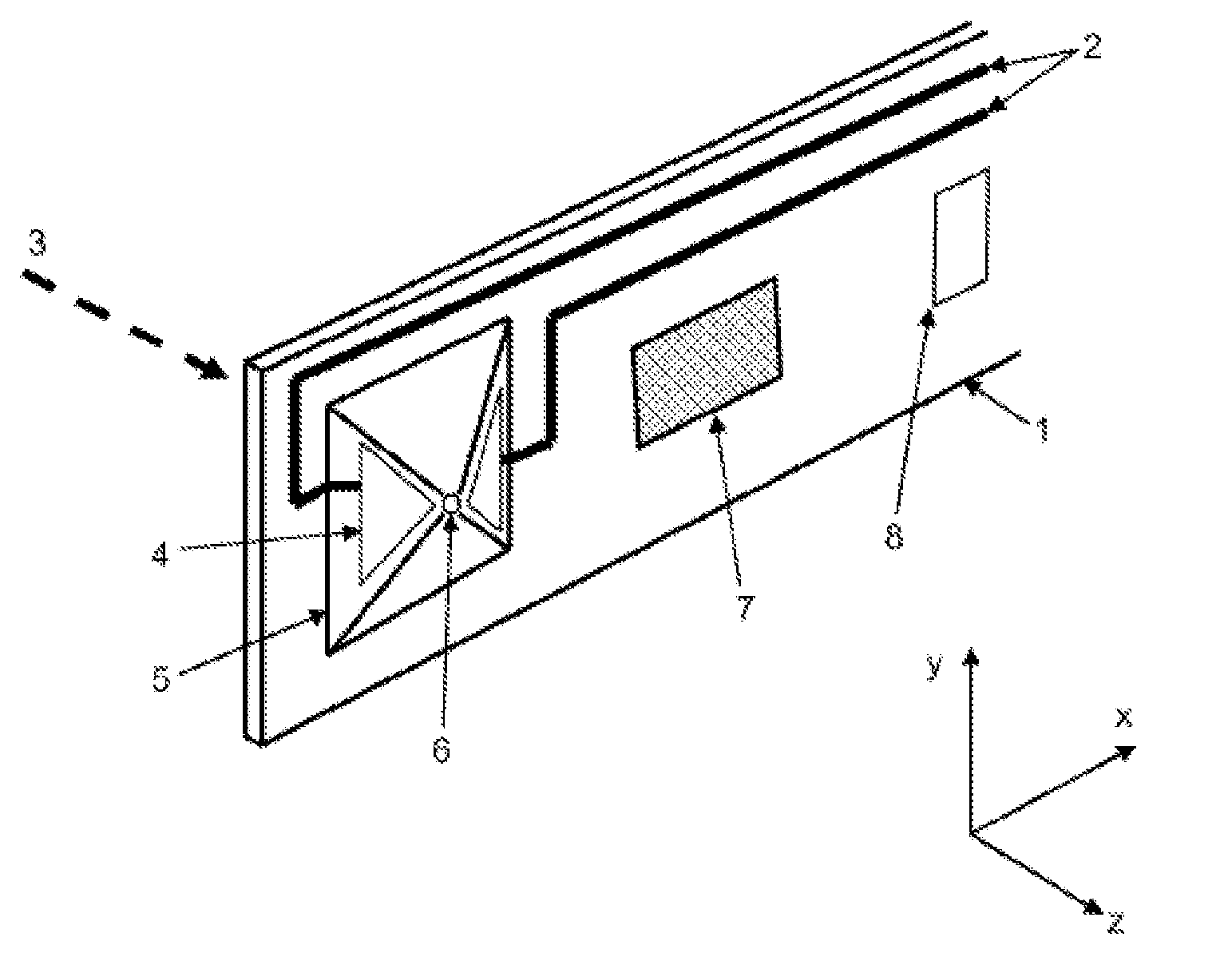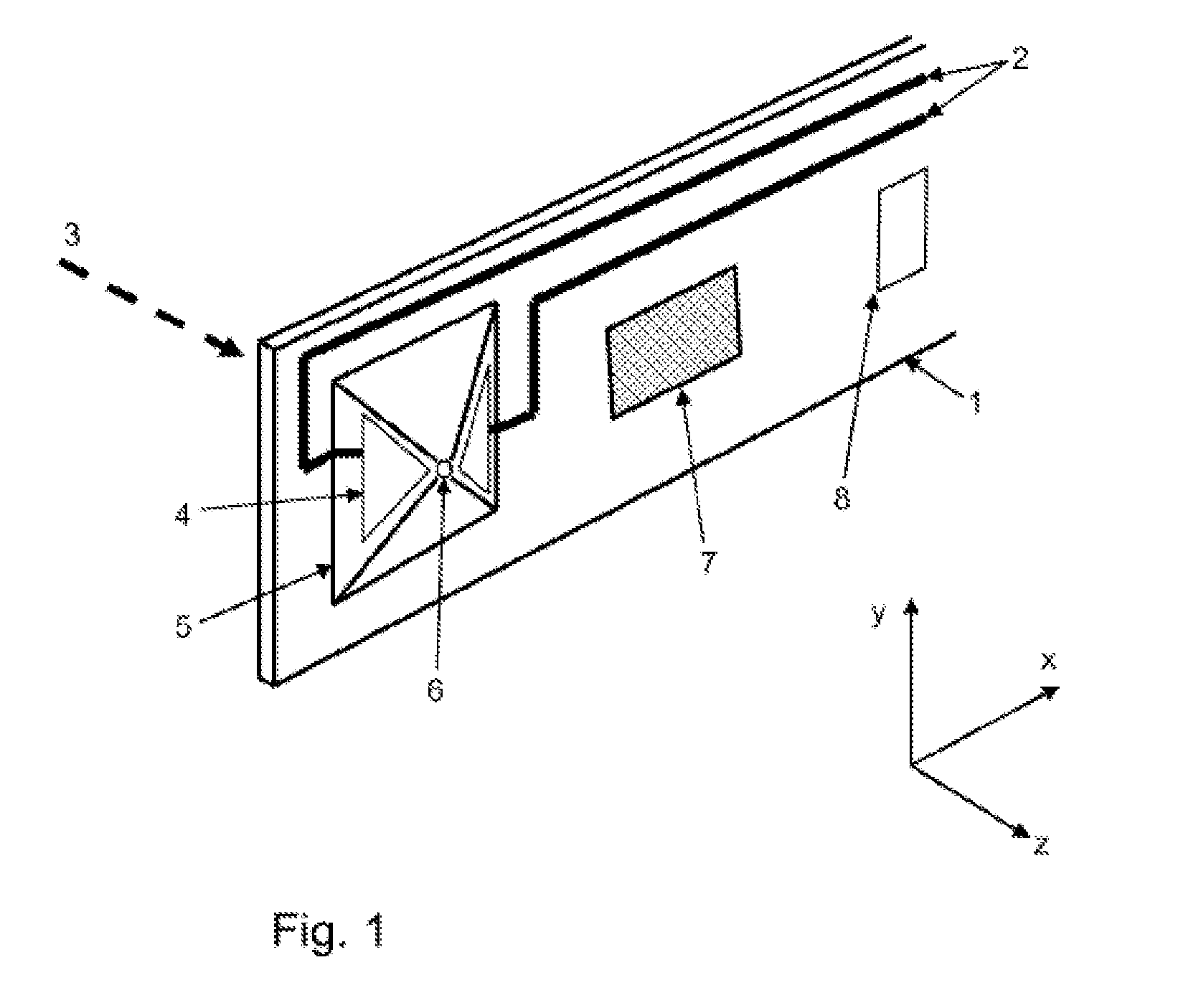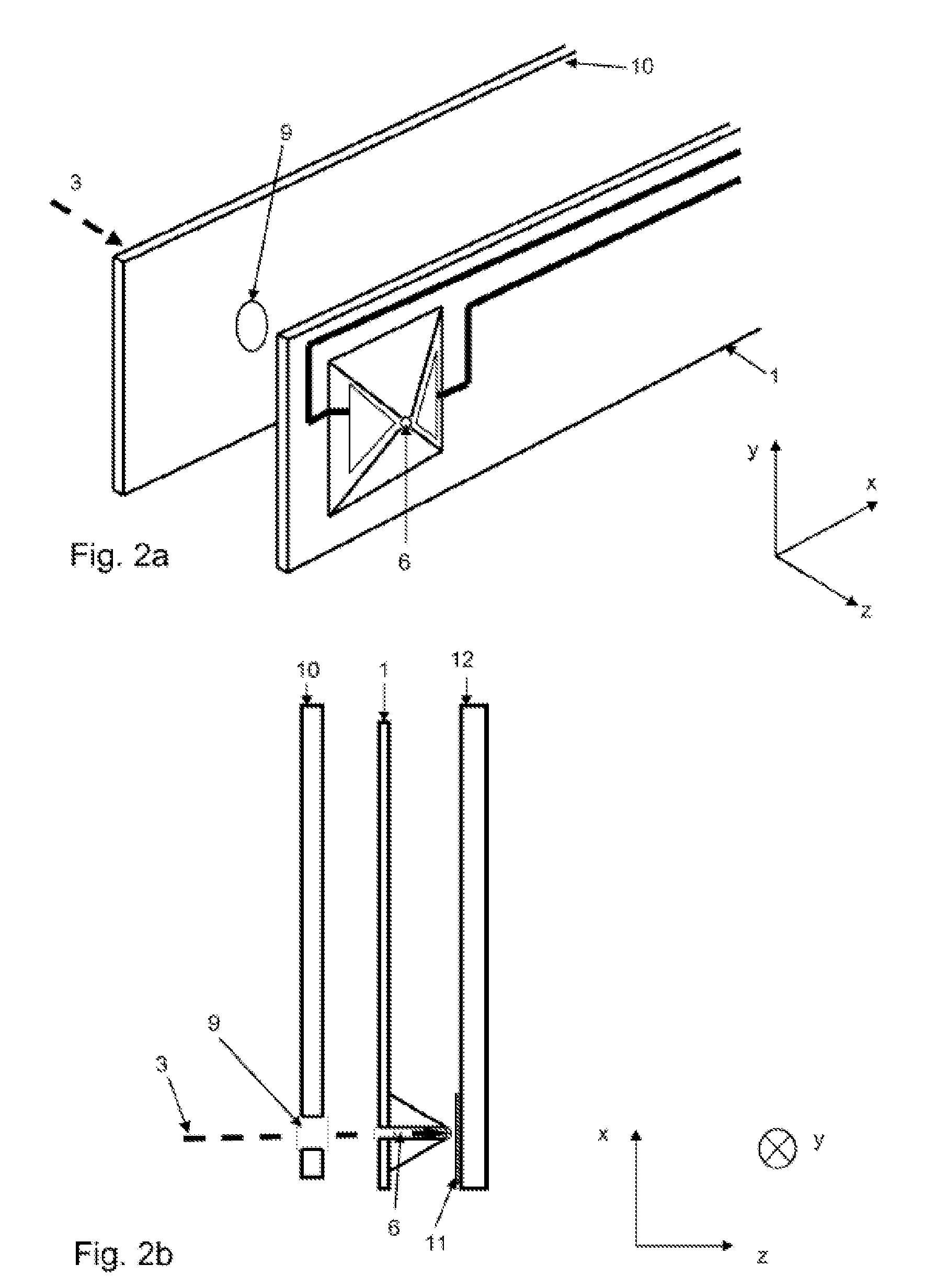Device and method for an atomic force microscope for the study and modification of surface properties
a technology of surface properties and microscopes, applied in the field of devices and methods for atomic force microscopes for the study and modification of surface properties, can solve the problems of limited possibilities for chemical and electronic identification of the surface, limited useable wavelength range, and inability to control the controllable area of the sample to be studied, and achieve the effect of active configurability of contacts
- Summary
- Abstract
- Description
- Claims
- Application Information
AI Technical Summary
Benefits of technology
Problems solved by technology
Method used
Image
Examples
Embodiment Construction
FIG. 1 shows the construction of the measurement tip 5 which is disposed at a cantilever 1. The measurement tip 5 features one or more holes 6 through which light 3, in particular synchrotron light or laser light, is applied to the surface of the sample to be investigated. Attached to the measurement tip 5 are at least two electrodes 4 that represent the plasmon resonator and are supplied via electrical connections 2. The hole 6 for the transmission of the light radiation 3 runs preferably centrally through the pyramid-shaped measurement tip 5 so that the light exits at the tip, between the electrodes 4. Attached to the cantilever 1 by known means are at least one integrated piezo-resistive sensor 8 and at least one integrated bimorph actuator 7.
In FIGS. 2a and 2b the basic arrangement of the device is represented which permits the coupling in of synchrotron radiation 3. The synchrotron radiation impinges laterally, horizontally onto a positionable initial aperture 9, which can be a...
PUM
 Login to View More
Login to View More Abstract
Description
Claims
Application Information
 Login to View More
Login to View More - R&D
- Intellectual Property
- Life Sciences
- Materials
- Tech Scout
- Unparalleled Data Quality
- Higher Quality Content
- 60% Fewer Hallucinations
Browse by: Latest US Patents, China's latest patents, Technical Efficacy Thesaurus, Application Domain, Technology Topic, Popular Technical Reports.
© 2025 PatSnap. All rights reserved.Legal|Privacy policy|Modern Slavery Act Transparency Statement|Sitemap|About US| Contact US: help@patsnap.com



